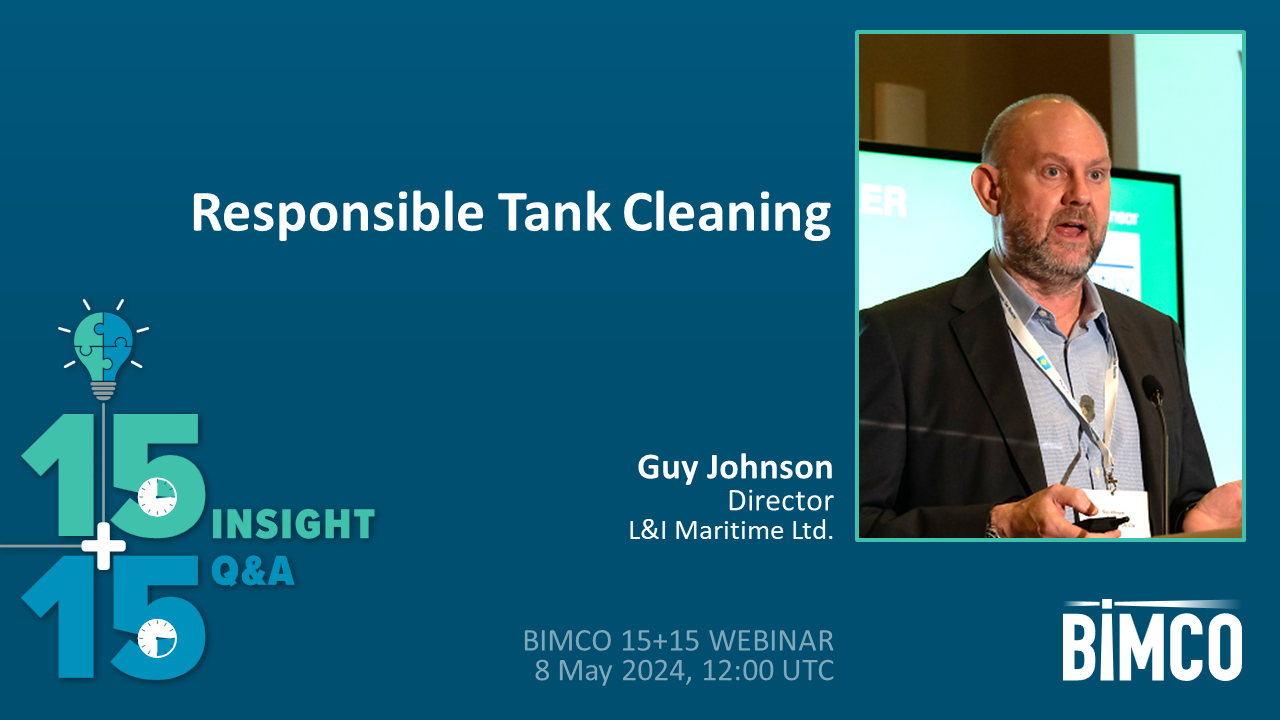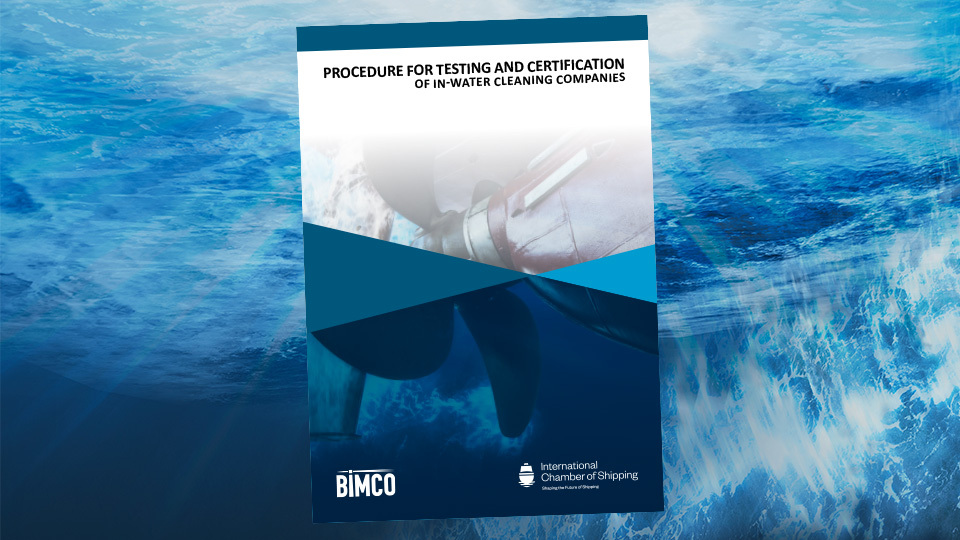IMO backs the industry proposal for prohibition on the carriage of non-compliant fuel oil in 2020
Overview
The fifth session of the IMO Sub-Committee on Pollution Prevention and Response (PPR 5) met in London from 5 to 9 February 2018. This report gives a brief overview of the most important items, which were debated:
Implementation of 0.50% sulphur limit in 2020
One of PPR’s most important tasks was the issue of consistent implementation of regulation 14.1.3 of MARPOL Annex VI dealing with the 0,50% m/m global sulphur limit, as previously decided by IMO.
BIMCO and other industry organisations, have proposed to establish a prohibition on the carriage of fuel oil exceeding 0.50% m/m sulphur, which is intended for use as bunker. It was at the same time recognised and made explicit that the proposed prohibition on the carriage of non-compliant fuel oil should not affect the carriage of high sulphur oil as cargoes.
The content of the industry submission was along the same lines of other submissions from Cook Islands, Norway, and the organisations Friends of the Earth International (FOEI), Greenpeace WWF, Pacific Environment and Clean Shipping Coalition.
All the submissions were well received by PPR 5, who established an intersessional working group to meet in July 2018 to progress the urgent matter. The intersessional working group will report to the next PPR 6 meeting taking place in February 2019 with a view for approval at MEPC 74. If so, a possible ban may enter into force by summer 2021.
To ensure proper implementation, PPR 5 developed a work plan and agreed to develop a comprehensive package of guidance and recommended practices for everyone involved with implementation of the new regulation. However, due to time constraints, these guidance documents were also referred to the intersessional meeting of the air emissions working group in 2018 with subsequent approval at PPR 6 in early 2019.
The issue of timing is of great concern as ship operators need sufficient time to prepare prior to 1 January 2020, which is the effective implementation date of the global 0.50% m/m sulphur cap. For this reason, BIMCO and the other industry organisations proposed to speed up the process by allowing the intersessional working group to report directly to MEPC 73 and in doing so, gain 7 months to prepare for the new regulation. PPR agreed on this extraordinary case, but have to get the approval by MEPC in April 2018.
Discharge of exhaust gas recirculation (EGR) bleed-off water
PPR finalized draft guidelines on the discharge of bleed-off water from EGR, which may be installed on board to reduce NOx output. The guidelines outline the criteria for when the EGR bleed-off water may (and may not) be discharged into the sea. In general, it depends on the fuel type and where the ship is operating. The residues from the bleed-off water treatment systems should, however, always be delivered to adequate reception facilities ashore, because such residues should not be discharged into the sea or incinerated on board.
Like many other systems on board, ships fitted with an EGR unit should record the storage and disposal of the waste water residues in a record book stipulating the date, time and location of any such storage and disposal.
The guidelines will now be forwarded to MEPC 73 in October 2018 with a view to adoption.
Black carbon emissions from ships
Based on several submissions related to the voluntary measurements protocol to collect data on black carbon (BC) emissions from ships, PPR 5 emphasized the need for BC measurement studies to be conducted so as to gain experience with the application of the definition and measurement methods. Such experience would allow a comparison of the measurement methods and an assessment of the scale of possible variation in the data collected.
At the meeting, PPR 5 identified the three most appropriate methods for measuring BC emissions (filter smoke number, photo acoustic spectroscopy, and laser induced incandescence). The three methods are not fully consistent with the BC definition, as they do not measure all the properties of BC. However, as technologies evolve, it is possible that new methods could also be considered and tested.
PPR 5 also agreed upon a draft reporting protocol for voluntary measurement studies to collect BC data. The protocol has been tested over the past years, and seems to be robust and fit for purpose. The reporting protocol will be sent to MEPC 72 in April 2018, for approval.
Now the most appropriate methods for measurement of black carbon has been identified, PPR will analyse future data and if necessary develop control measures to reduce the BC emission impact from international shipping.
New requirements for certification of engines fitted with SCR systems
PPR 5 also developed draft amendments to the 2008 NOx Technical Code addressing the use of Scheme A or Scheme B for approval and certification of a marine diesel engine fitted with Selective Catalytic Reduction (SCR) systems.
According to the NOx Technical Code, an engine system fitted with SCR has to be tested on a test bed (Scheme A). If it is not appropriate to do the certification on a test bed due to technical or practical reasons, the engine/SCR system can be certified on board (Scheme B).
PPR 5 decided to change the previous practice for the two schemes so as to make them equally applicable. This required an amendment to the 2008 NOx Technical Code, now saying that where a NOx-reducing device is to be included into the Engine International Air Pollution Prevention (EIAPP) certification, it must be recognized as a component of the engine. This has to be recorded in the engine’s Technical File. The applicable test procedures have to be performed and the combined engine/NOx-reducing device must be approved and pre-certified by the administration according to the guidelines (MEPC.291(71)).
The amendments will now be forwarded to MEPC 73 in October 2018 for approval, with a view to adoption at MEPC 74 in 2019.
Multiple engine operational profiles
PPR 5 agreed to establish a new agenda item related to the use of multiple Engine Operation Profiles (so-called MAP’s) with the aim of developing guidelines on this matter.
New engines normally have the possibility of using electronic engine management systems, whereby the start and duration/end of injection can be selected independent of each other and also variable rail pressure control arrangements can be adjusted. The fuel injection controls can also be combined with injector switching, inlet/exhaust valve timing including charge air or exhaust bypass/waste gate settings.
Some delegations expressed concerns as the NOx emissions limits need to be respected regardless of the mode/MAP, as there is a potential for a “boost function” beyond the maximum power for the Energy Efficiency Design Index (EEDI). This can cause the emission limits being exceeded for shorter/longer time.
The question is, however, whether this should be allowed, and if so, what regulatory controls should be applied, noting that these may also need to include amendments to MARPOL Annex VI and the NOx Technical Code. The guidelines will define if and when switching between MAPs is allowed and at what frequency.
The work will start at the next meeting of PPR in spring 2019.
Working Group on International Code for the Construction and Equipment of Ships carrying Dangerous Chemicals in Bulk (IBC)
PPR also worked on revising the IBC, and in particular chapters 17 (Summary of minimum requirements), chapter 18 (List of products to which the code does not apply) and chapter 21 (Criteria for assigning carriage requirements for products subject to the IBC Code).
The review aimed at harmonizing the requirements for individual substances with the UN Globally Harmonized System of Classification and Labelling of Chemicals (GHS) and the Joint Group of Experts on the Scientific Aspects of Marine Environmental Protection (GESAMP) hazard evaluation procedure for chemical substances carried by ships.
The amendments will be forwarded to MEPC for approval.
Ballast Water Management
The first BWM systems (BWMS) have just recently been type approved by a Classification Society under the 2016 Guidelines for approval of ballast water management systems (G8). These guidelines will later this year be transformed into a mandatory Code for approval of ballast water management systems (BWMS Code).
PPR 5 also developed some draft guidance on the new concept of System Design Limitations (SDL) requiring BWMS manufacturers and the involved authorities to state on the BWMS type approval certificate any limiting conditions for the BWMS. The SDL was introduced by the 2016 G8 Guidelines.
Furthermore, the working group discussed a number of aspects of Ballast Water Sampling and Analysis, though it was agreed to await the publication of the new ISO Standard (ISO 11711) on Ballast water sampling and analysis before amending the Guidance on ballast water sampling and analysis for trial use in accordance with the BWM Convention and Guidelines (G2).
Finally, a proposal for amending Annex 1 (Controls on antifouling systems) of the Antifouling Convention (the so-called AFS convention) to include “Cybutryne” was discussed at length but due to time constraint, the group requested to extend the deadline for this issue to 2020.
Guidelines for the use of electronic record books under MARPOL
PPR 5 prepared also draft Guidelines for the use of electronic record books under MARPOL.
The format for the recording of discharges under MARPOL is provided in the appendixes to the relevant MARPOL Annexes. Traditionally, the format of these record books has been in a hard copy.
However, as companies and shipowners increasingly focus on ways to operate in an environmentally responsible manner and aim to reduce the heavy burden associated with paper work through electronic means, the concept of operational logs in an electronic format has become a popular consideration.
The draft Guidelines are only applicable to the following record books:
- Oil Record Book, parts I and II (MARPOL Annex I, regulations 17.1 and 36.1)
- Cargo Record Book (MARPOL Annex II, regulation 15.1)
- Garbage Record Book, parts I and II (MARPOL Annex V, regulation 10.3)
- Ozone-depleting Substances Record Book (MARPOL Annex VI, regulation 12.6)
- Recording of the tier and on/off status of marine diesel engines (MARPOL Annex VI, regulation 13.5.3)
- Record of Fuel Oil Changeover (MARPOL Annex VI, regulation 14.6)
- Record Book of Engine Parameters (NOx Technical Code, paragraph 6.2.2.7)
Note that the use of an electronic record book to record operational logs is currently only an alternative method to a hard copy record book, as some flag administrations still want to have the discretion to decide on the format.
Feedback or a question about this information?
VPS Bunker Alerts
Veritas Petroleum Services (VPS) publish regular Bunker Alerts based entirely on fuel samples and have kindly permitted BIMCO’s Members to access this information.
The Bunker Alerts are not intended to be an evaluation of overall bunker quality in the port or area concerned, but usually highlight a specific parameter within the fuel which has raised a quality issue.
ELSEWHERE ON BIMCO
Contracts & Clauses
All of BIMCO's most widely used contracts and clauses as well as advice on managing charters and business partners.
Learn about your cargo
For general guidance and information on cargo-related queries.
BIMCO Publications
Want to buy or download a BIMCO publication? Use the link to get access to the ballast water management guide, the ship master’s security manual and many other publications.





